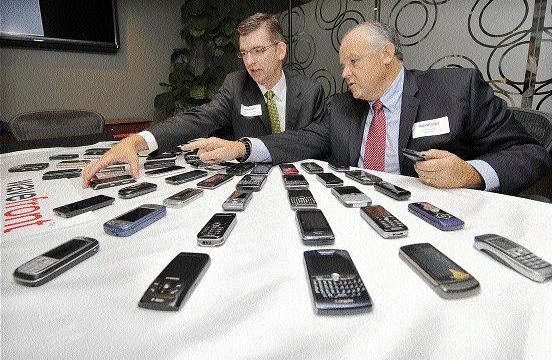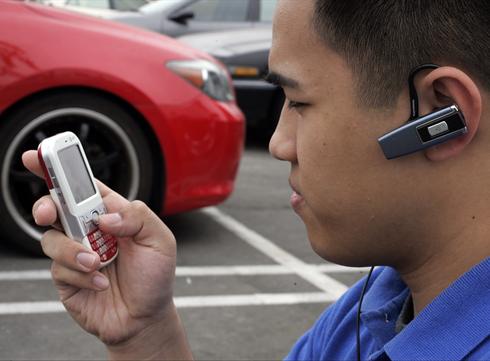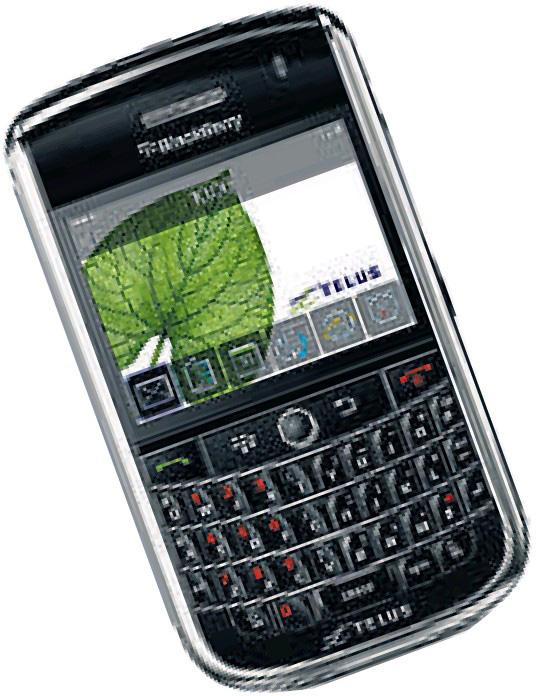Non-profit joint venture helps small wireless companies get started
Derrick P
Sun

B.C. Minister of Small Business Iain Black (left) and Wavefront president James Maynard look over some of the technology available to developers at Wavefront’s new Guinness Tower location in Vancouver on Tuesday. Photograph by: Ward Perrin, Vancouver Sun
Until May, Aaron Hilton’s tiny wireless mapping firm, Cellmap, bartered with a wholesale florist for office space.
Cellmap and a partner firm, ConQuer Mobile, built the florist’s website, and in exchange they got a couple of desks to work from to make their own ideas fly.
Since May, Cellmap and ConQuer have got their feet in the door of Wavefront, a non-profit joint venture of industry and government designed as a testing centre and business incubator to help wireless developers get off the ground.
On Tuesday, Hilton was on hand as Wavefront officially opened its business centre in the Guinness Tower on West Hastings Street in downtown Vancouver.
“[Wavefront] is a huge deal,” Hilton said in an interview. “It’s enabled us to grow. We’ve had a team of six people in this office now, and we wouldn’t have been able to afford that.”
Hilton said the mentorship Wavefront president James Maynard has offered “has been invaluable.”
In an interview, Maynard added that providing mentorship to little firms like Hilton’s is a big part of the point of Wavefront, which was formed in 2007 based on a proposal from the Wireless Innovation Network of B.C. to the Premier’s Technology Council.
Based on the council’s recommendation, the province made a $5-million bet on Wavefront. Western Economic Diversification chipped in $1 million, and Wavefront has received financial support form industry sources including the mapping firm Navteq and Bell Canada.
Companies ranging from Ericsson to Nokia have helped provide technology for the centre to run with.
To date, Maynard said B.C.’s wireless technology sector boasts 250 companies employing some 6,000 people, and the hope is that Wavefront will help it expand on a wider scale.
“This is really the coming out of this phase of the expansion of the [wireless] business,” Maynard said in an interview.
One early success saw Wavefront connect seven wireless developers, three of them from Vancouver, with Sierra Wireless. Now they’re selling through the carrier AT& T in the United States.
“That’s the example of what we want to do,” Maynard said, “is to take small companies that are emerging in the wireless space, connect them with platform players like Sierra and then give them that market traction into the big [wireless] operators around the world.”
The centre will run on a fee-for-service basis to the firms that want access to its support. Maynard said the fee system, for services such as network testing, will be more cost-effective for smaller developers than if they had to do it all on their own.
Another unique feature of the Wavefront centre is its library of 300 smart-phone handsets from Apple iPhones and Research in Motion BlackBerrys to Nokia and Ericsson models.
Sue Marek, editor in chief of Fierce Wireless, a daily website devoted to covering the wireless industry, said Wavefront is unique in its combination of technical and business development support for wireless startups.
“I think it’s a really good model,” Marek said in an interview. “You can go and do the testing, as a developer, on your own. Those things exist, but not bringing all these [elements] together like this.”
Marek said she hasn’t toured all the wireless technology clusters in Asia or Europe to make a comprehensive comparison to Wavefront, but “I wish there was something like this in the United States.”
Iain Black, B.C.’s minister of small business, technology and economic development said the province views Wavefront as an opportunity to “not only facilitate but really accelerate the growth of new media and wireless industry in B.C.”
To date, one of Hilton’s successes with Cellmap has been to develop an interactive location application for Canpages.
For now, he views the collection of little startup firms that have gathered at the Wavefront centre as “an amazing brain-power hub that’s just going to knock the socks off of anywhere else in Vancouver.
“This is hot.”
© Copyright (c) The Vancouver Sun













